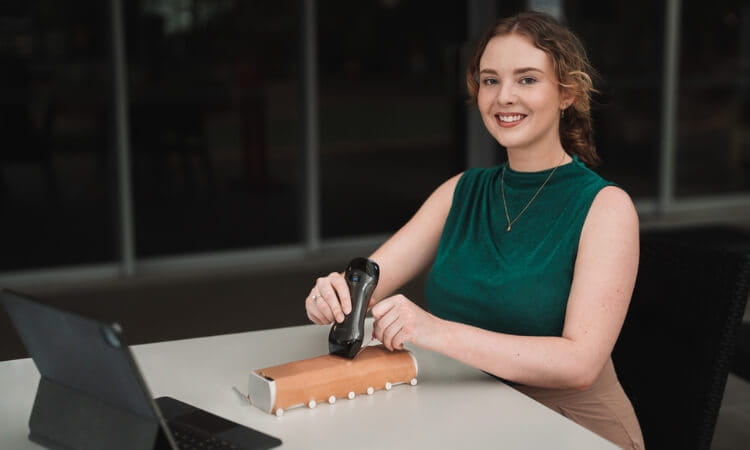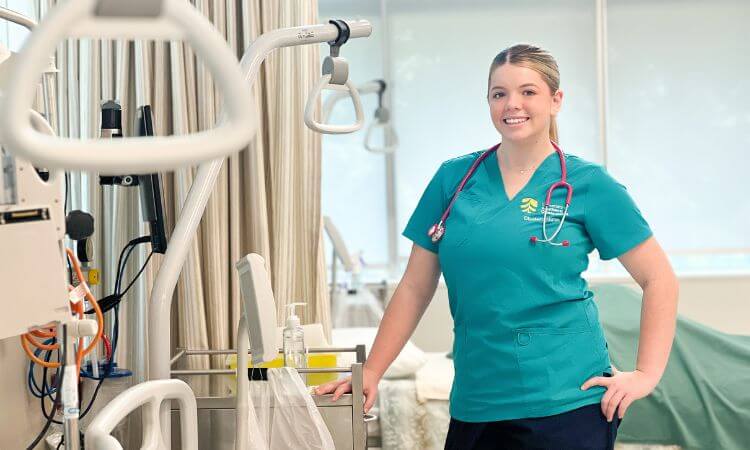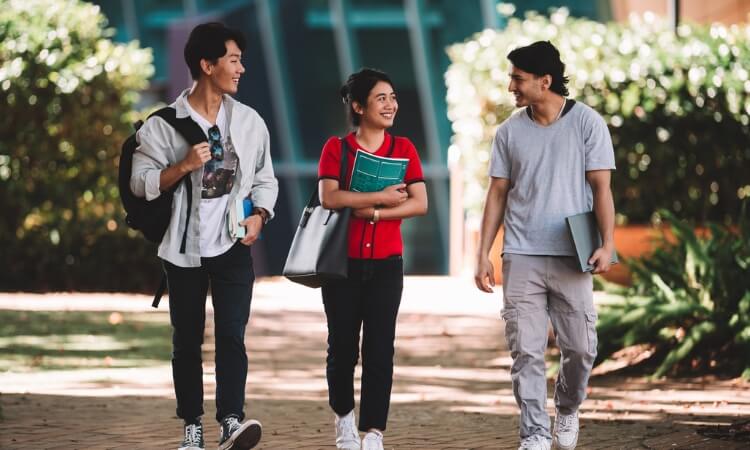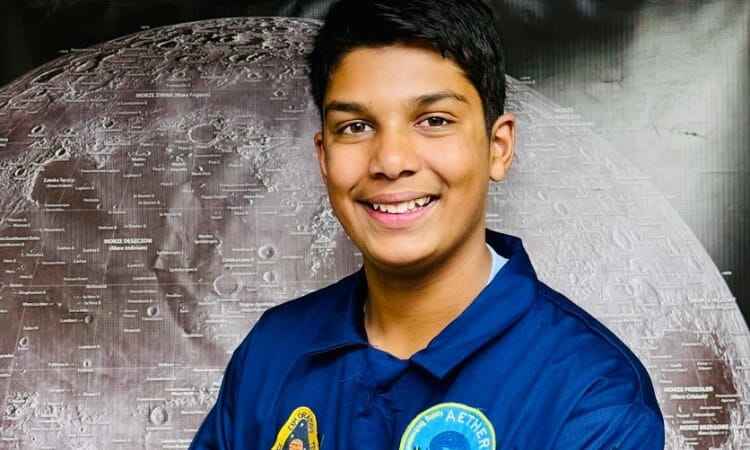Saving lives while saving the environment

Nursing, medical, and other healthcare students are all in the business of learning clinical skills to save lives.
But thanks to an innovative project spearheaded by an aspiring doctor from Toowoomba, they could also be saving the environment.
Recent University of Southern Queensland graduate and research assistant Georgia Poole, together with doctors from Toowoomba Hospital and researchers from the Centre for Future Materials’ SIMPLE Hub, has developed a cost-effective and eco-friendly training tool for teaching clinical skills such as intravenous cannulation.
The project was designed to address the need for improved accessibility, affordability and reduced environmental impact of clinical skills training tools.
In an industry where one small mistake can be catastrophic, a high level of practical training beyond textbooks and classrooms is essential.
Ms Poole believed the tool, which resembles a lower arm and includes two 3D-printed bones and a seaweed-based material, would create greater opportunities for students to practice and improve their practical clinical skills, potentially leading to fewer complications associated with cannulation.
“Cannulation is a very common medical procedure, but when it’s performed incorrectly, it has the potential to lead to numerous complications, including pain, infection and drug failure,” Ms Poole said.
“Ultrasound-compatible cannulation training tools are presently available on the market but are quite costly, which limits their accessibility.
“That’s why we wanted to produce something that was not only cost-effective but also reusable and therefore more environmentally friendly than existing training tools.”
The tool is made by pouring a gel into a solid mould, which is set to resemble the flesh portion of an arm. Soft tubing runs through the mould to form simulated veins for cannulation, and a thin silicone layer is laid on top to resemble skin.
“We aimed to make the components as sustainable as possible, which is why we chose agarose, a plant-based compound derived from seaweed, as the main setting agent for the gel,” Ms Poole said.
“The solid outer mould is reusable, and the internal gel can be melted in a microwave and re-set multiple times to allow further re-use.
“The only portion of the tool that requires replacement is the inner tubing.”
The project began in mid-2022 as a placement opportunity for Ms Poole while undertaking her Bachelor of Biomedical Sciences. It was carried out under the supervision of the University of Southern Queensland’s biomedical scientist Professor Eliza Whiteside and Makerspace Coordinator Steph Piper, and Toowoomba Hospital’s Dr Doogie Whitcombe and Dr Rose Nicol.
After almost 18 months of designing, refining and testing, Ms Poole said the tool could soon be used as a training tool in universities and become more widely available.
“I’m thrilled with the final training tool that we have produced and thankful to the wonderful team of supervisors and staff who assisted me throughout the project,” she said.
“It was a rewarding experience, which allowed me to deepen my understanding of the processes behind scientific research and the production of new medical tools, as well as to improve my skills.”
The project was undertaken under the UniSQ-led SIMPLE (Sustainable Industry Manufacturing Planning for Long-Term Ecosystems) Hub. The Hub creates a step-change by focusing on capacity-building initiatives to enable industry and universities to co-design and develop new products and processes to support regional manufacturing priorities such as technical, environmental, economic, educational, and cultural aspects of green energy, resource recovery and waste reduction/recycling/upcycling.
It also creates a workforce pipeline to support the sector, training industry-ready researchers who will be the innovators for regional manufacturing industries into the future.
To learn more, visit our website.


